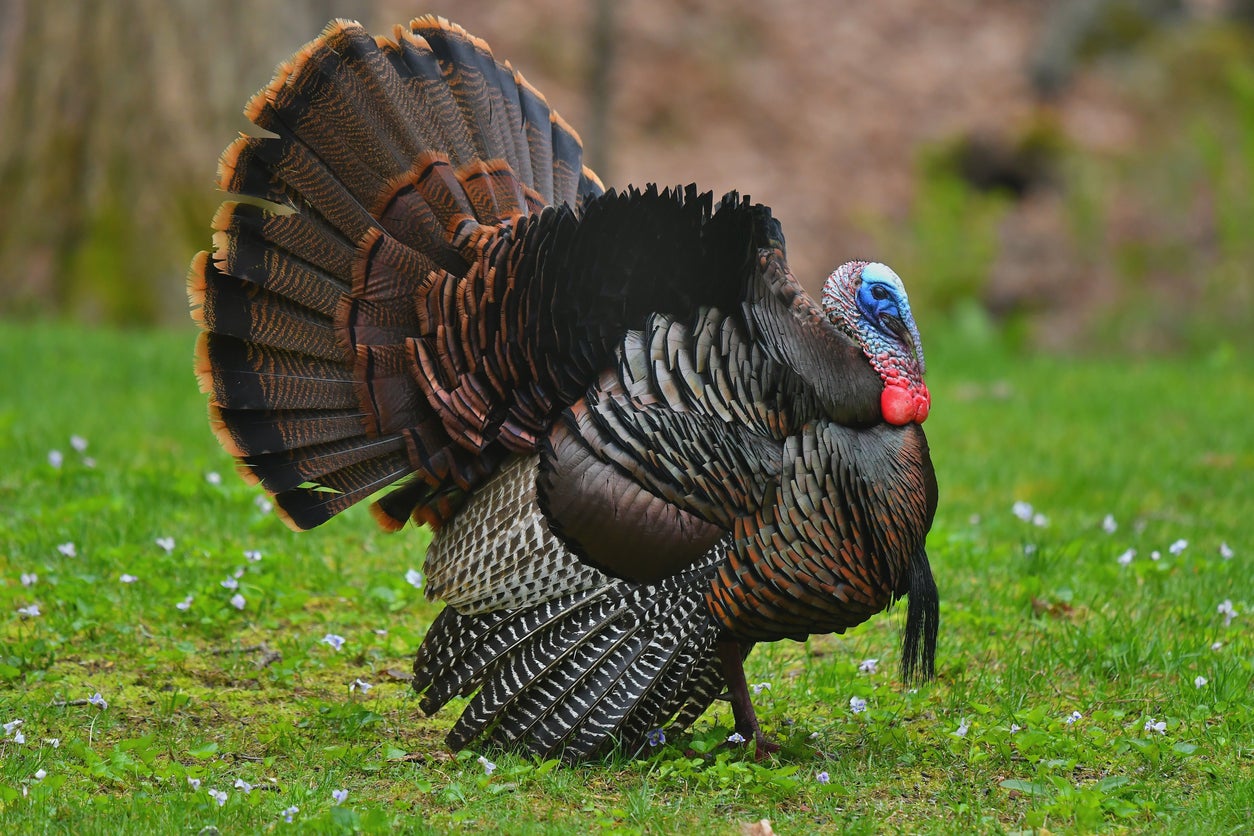Turkey baffles biologists by making it to 12 years old: ‘It should not be alive’
The turkey is the oldest ever recorded in the state of Pennsylvania

Your support helps us to tell the story
From reproductive rights to climate change to Big Tech, The Independent is on the ground when the story is developing. Whether it's investigating the financials of Elon Musk's pro-Trump PAC or producing our latest documentary, 'The A Word', which shines a light on the American women fighting for reproductive rights, we know how important it is to parse out the facts from the messaging.
At such a critical moment in US history, we need reporters on the ground. Your donation allows us to keep sending journalists to speak to both sides of the story.
The Independent is trusted by Americans across the entire political spectrum. And unlike many other quality news outlets, we choose not to lock Americans out of our reporting and analysis with paywalls. We believe quality journalism should be available to everyone, paid for by those who can afford it.
Your support makes all the difference.A wild turkey recaptured in Pennsylvania sent shockwaves throughout the local wildlife community as they deduced the hen was at least four times older than the average wild bird, making her the oldest the eastern state has ever recorded.
The discovery of the 12.5-year-old hen was made by biologists in Clearfield County who were conducting a wider research program to study the nesting and habitat patterns of the wild birds with the PA Game Commission.
In a Facebook post, the team noted that, in an attempt to put the bird’s age in perspective, “if a hen reaches her first birthday, she has an average life expectancy of 1 to 3 more years”.
Mary Jo Casalena, a turkey biologist for the team, noted in an interview with Mossy Oak that the bird, though in seeming good health for its age, should be recognised as an anomaly.
“To tell you the truth, this hen should not be alive. She’s defying all of our longevity records that we’ve ever had in Pennsylvania,” she told local outlet Mossy Oak.
Game Warden Chris Ivicic for the PA Game Commission told Mossy Oak that when the researchers first caught the senior bird back in February, it took the team a bit of time to make the connection that it was one they had tagged 10 years earlier while conducting a similar field study.
The team were able to put two and two together after noting the band around her leg, which is part of a tracking system that the biologists use to assess population dynamics of the species.
One of the researchers on the team, who Mossy Oak reported was hired for the four-year study, told the outlet that he texted his team the band number so they could try and identify the bird they’d recaptured.
“It was pure luck that we caught this bird. It was just an ordinary trapping,” Tony Musselman, the hired research assistant, told the outlet. “I would have told you she was a 3 or 4-year-old hen. She looked healthy, she looked great.”
It was then that the PA Game Commission was able to consult their records and verify that they had indeed trapped this hen before, in fact, just a mile from where they’d found her in 2022, and that back in 2012, they’d recorded her age as being at least 1.5 years old.
Now the game warden, Mr Ivicic, who was back then a wildlife conservation officer, told Mossy Oak that when the team realised who exactly they’d been reunited with while tracking that day in February he felt as though he’d been “reunited with a long-lost love from ten years prior”.
Though this 12.5-year-old hen holds the Pennsylvania state record for the oldest wild turkey ever caught, the country-wide record is still held by a male turkey from Massachusetts who researchers placed at 15 at the time of his death.
The team that found the 12.5-year-old bird again are conducting this large-scale research study through to 2025, as they hope to better understand local hen populations, disease prevalence and movement dynamics.
“It’s going to be the largest turkey project we’ve ever conducted, with the hope of answering many questions regarding current hen population dynamics,” said Ms Casalena, the commission’s turkey biologist, in a press release.
Local wild turkey populations have been trending downwards in recent years, according to the PA Game Commission. In the early 2000s, the state estimated that there were anywhere between 280,000 to 400,000 gobblers living in the wild.
The most recent data, from 2019, indicates that number has fallen off to 212,170, with conservationists noting that habitat loss, disease, climate change induced weather conditions and hunting to all be contributing factors.
Join our commenting forum
Join thought-provoking conversations, follow other Independent readers and see their replies
Comments